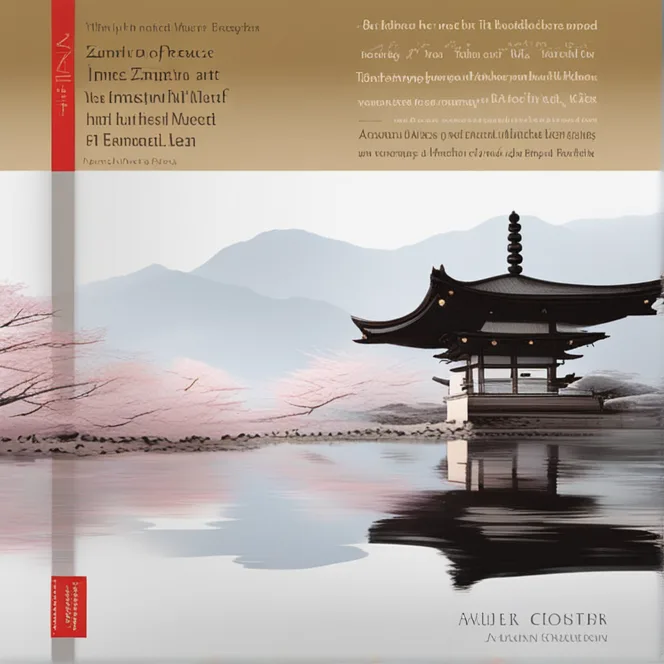
Zen Meditation: Unlocking The Doors To Inner Calm
Explore the serene world of Zen meditation techniques to achieve clarity, calmness, and mindfulness in your daily life.
article by Hina Kurosawa
Introduction to Zen Meditation
Zen meditation, rooted in Buddhist tradition, has evolved over centuries to become a cornerstone of spiritual practice for many seeking inner tranquility and insight. This article delves into the fundamental techniques of Zen meditation that guide practitioners to a state of deep calm and heightened awareness. Emphasizing posture, breathing, and mind-state, these methods serve as a gateway to self-discovery and harmony with the universe. As we embark on this journey, let's embrace the Zen philosophy that teaches us to find beauty in simplicity and to experience the present moment fully.

Finding Your Seat
The initial step in Zen meditation is adopting the proper posture, which is vital for maintaining focus and allowing energy to flow freely. Traditionally, practitioners sit on a cushion or mat, with legs crossed in the lotus or half-lotus position. However, comfort should not be sacrificed; it is perfectly acceptable to sit on a chair or in any posture that keeps your back straight and stable. The aim is to create a foundation that is both stable and alert, setting the stage for a meditation session free from physical distraction.

Breathing with Intention
Breath is the life force that shapes our meditation experience. In Zen, the focus is on deep, abdominal breathing, allowing the belly to expand with each inhalation and contract with each exhalation. Counting breaths can be a helpful tool for beginners — count one on the inhale, two on the exhale, and so on, up to ten before returning to one. This technique helps anchor the mind to the present and prevents it from wandering through the corridors of past and future thoughts.
Embracing the Art of Zazen
At the heart of Zen meditation is Zazen, a practice of seated meditation that is both the means and the end of Zen. It is an art of doing nothing but being acutely present. During Zazen, the eyes are kept open but softly gazing downwards to avoid drowsiness and maintain the connection with the surrounding world. The essence of Zazen lies not in seeking enlightenment but in the act of sitting itself, being present and attending each moment without attachment or judgment.

Mindful Awareness and Observing Thoughts
A unique aspect of Zen meditation is the passive observation of thoughts and sensations without becoming entangled in them. This attitudinal shift from active engagement to passive observation allows practitioners to recognize the impermanent nature of thoughts. By witnessing thoughts as they arise and dissipate, one cultivates a sense of detachment, realizing that thoughts do not define our essence but simply pass through the landscape of our minds.
Integrating Zen into Daily Life
Zen meditation is not confined to the cushion; it is a living practice that permeates every aspect of life. Practitioners are encouraged to carry the principles of Zen into routine activities, transforming mundane tasks into mindful exercises. Eating, walking, or even washing dishes can be done with Zen mindfulness, turning these actions into opportunities for meditation. This integration fosters a continuous state of presence and attentiveness, enriching life with clarity and intention.
Challenges and Consistency
As with any discipline, Zen meditation presents its challenges. Beginners may confront discomfort, distractions, and a wandering mind. However, with patience and consistent practice, these hurdles become valuable lessons. Embrace challenges as part of the journey, remembering that every session is a step toward mastery. The serene state achieved through steady Zen practice offers profound insights and a tranquil mind, benefits that inspire continual dedication to the path of meditation.
Published: 12/7/2023
Modified: 12/7/2023
More predictions
Come back here soon to learn more about yourself and your future


Meditation: Beyond Just Relaxation
Discover the multi-faceted nature of meditation as a practice that transcends simple relaxation, exploring its profound benefits for mind, body, and spirit.


Meditation: More Than Just Relaxation
Explore how meditation transcends basic relaxation to offer a myriad of psychological and physical benefits.


Yoga vs Meditation: Understanding The Difference
Explore the distinctive qualities of yoga and meditation in this insightful article that delves into the purpose, practice, and benefits of each.